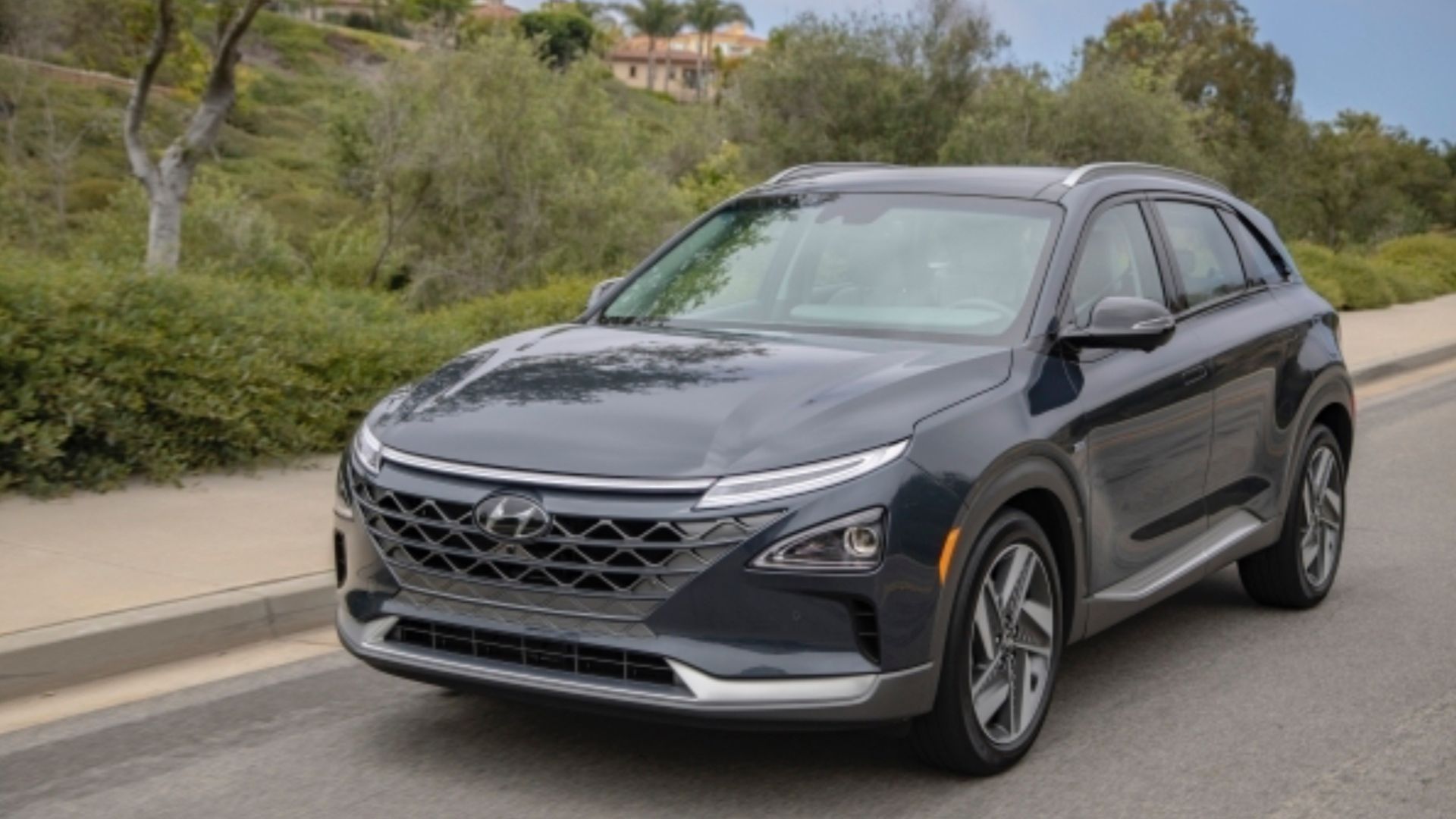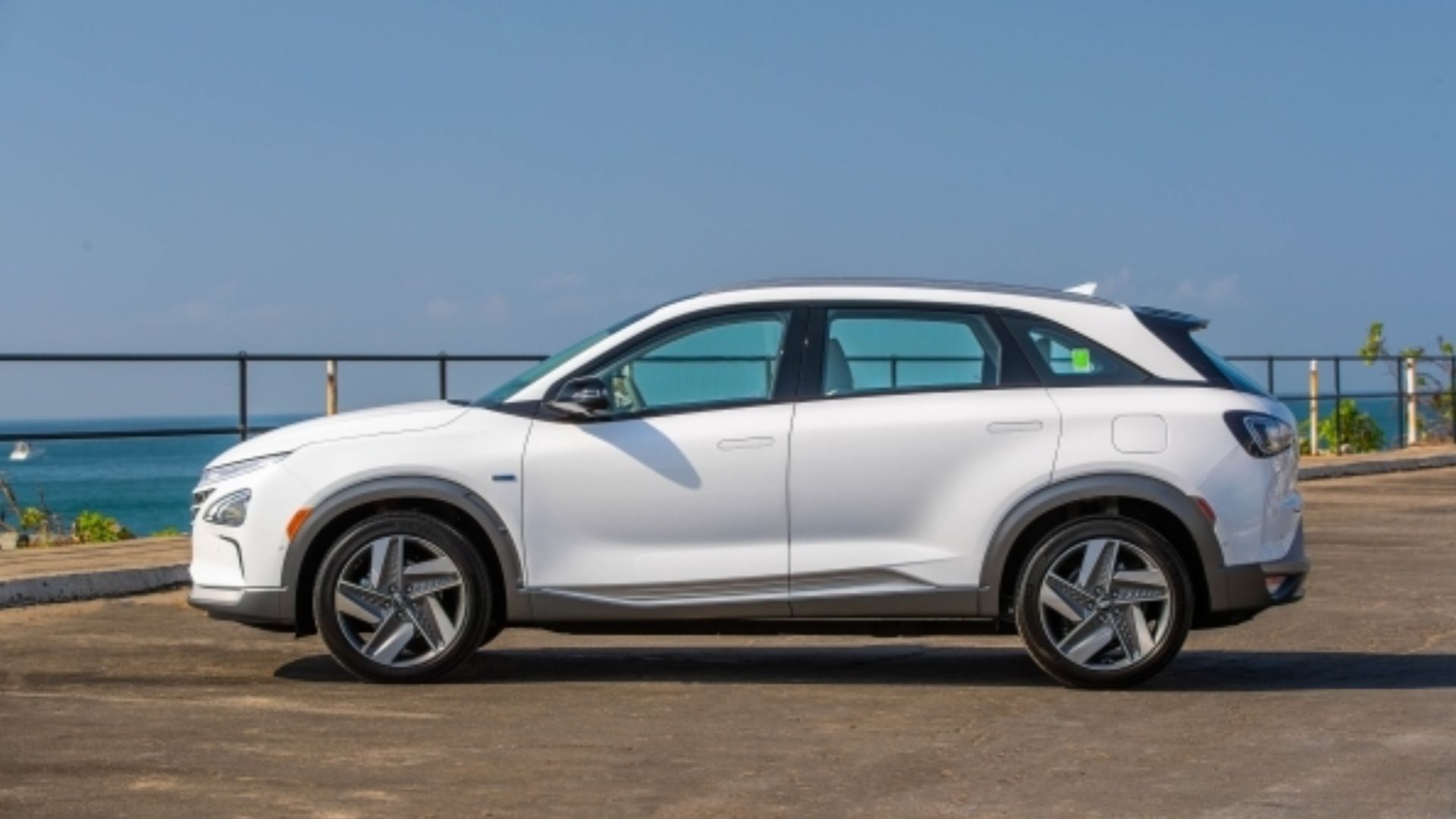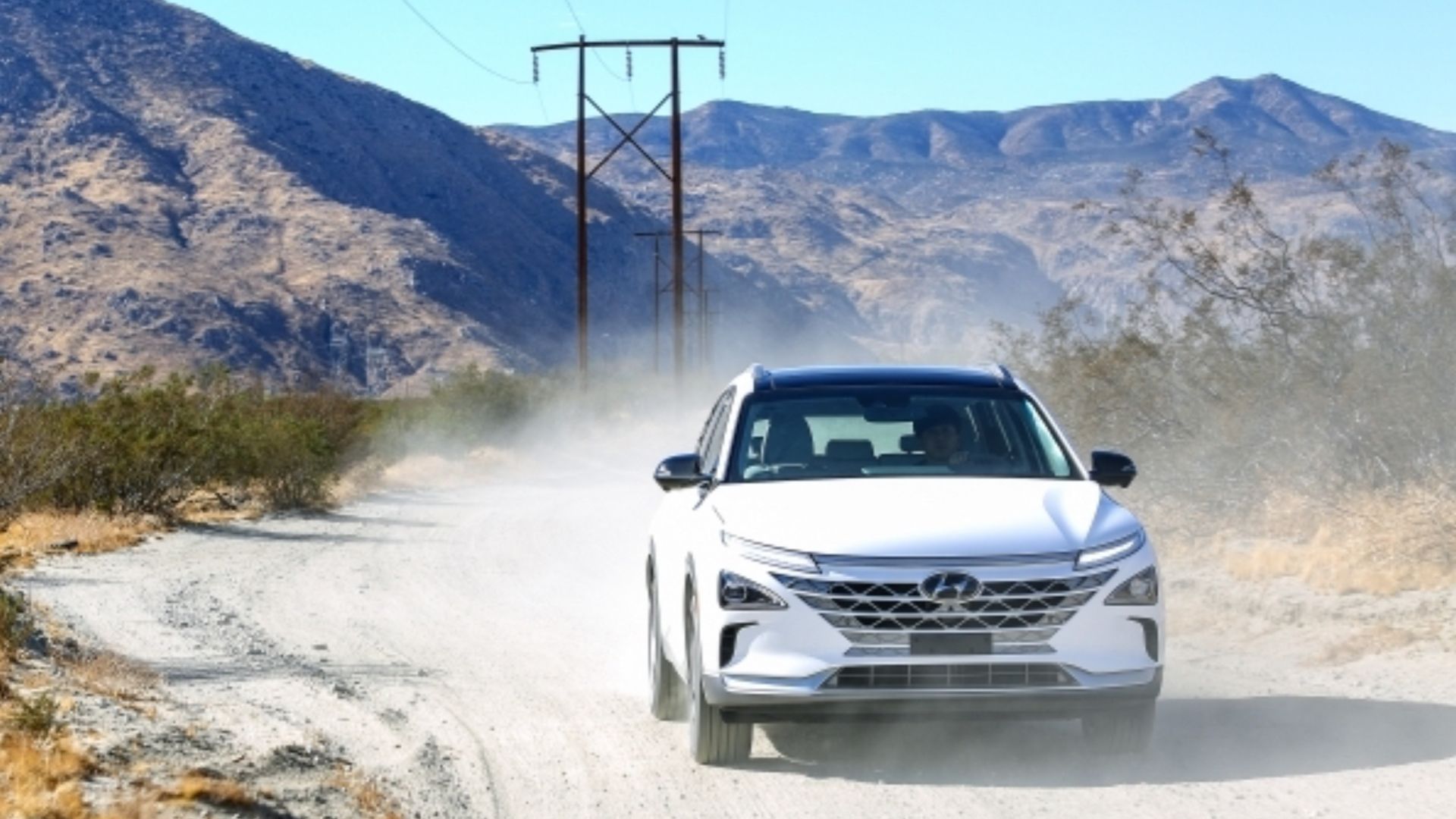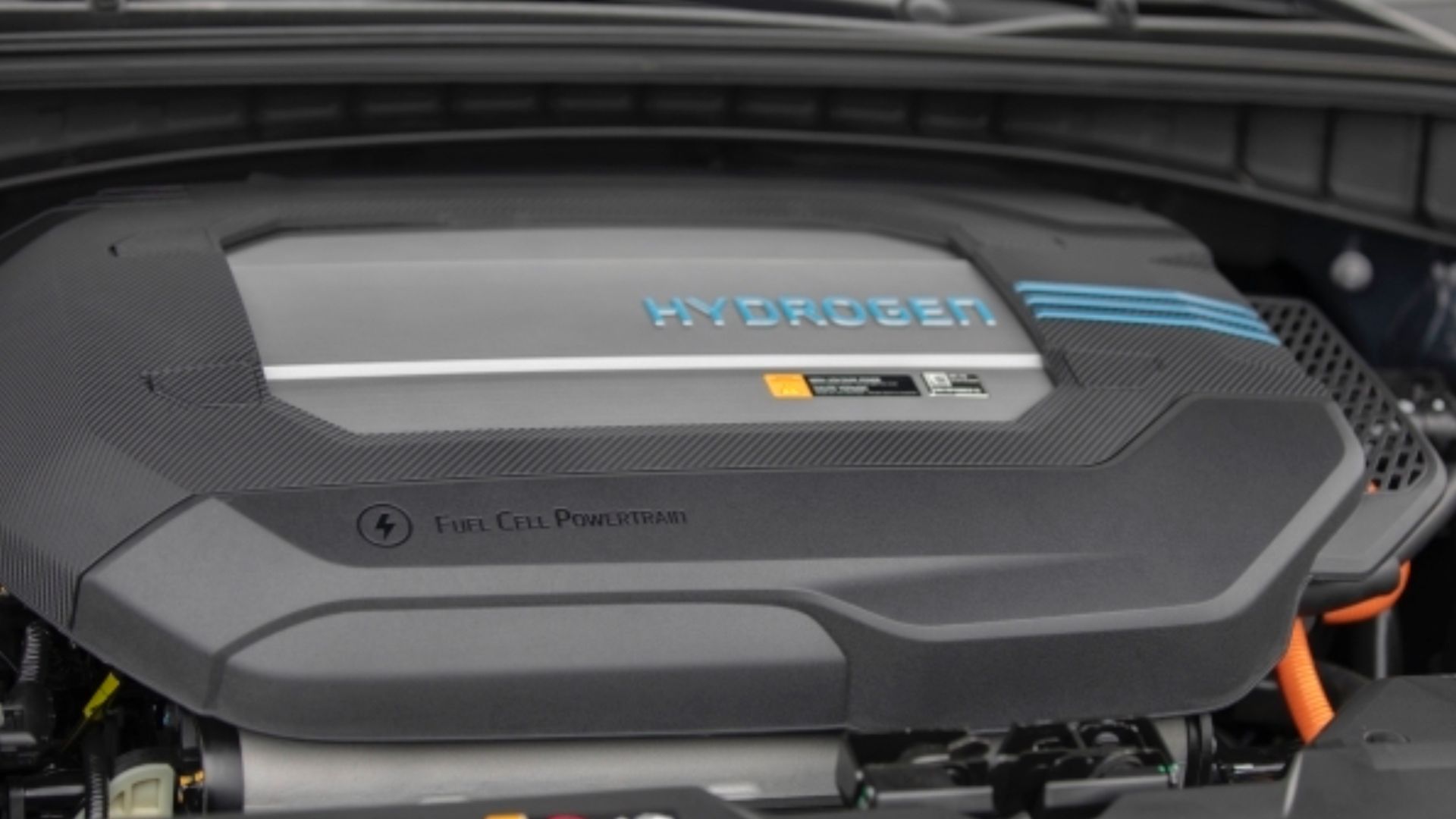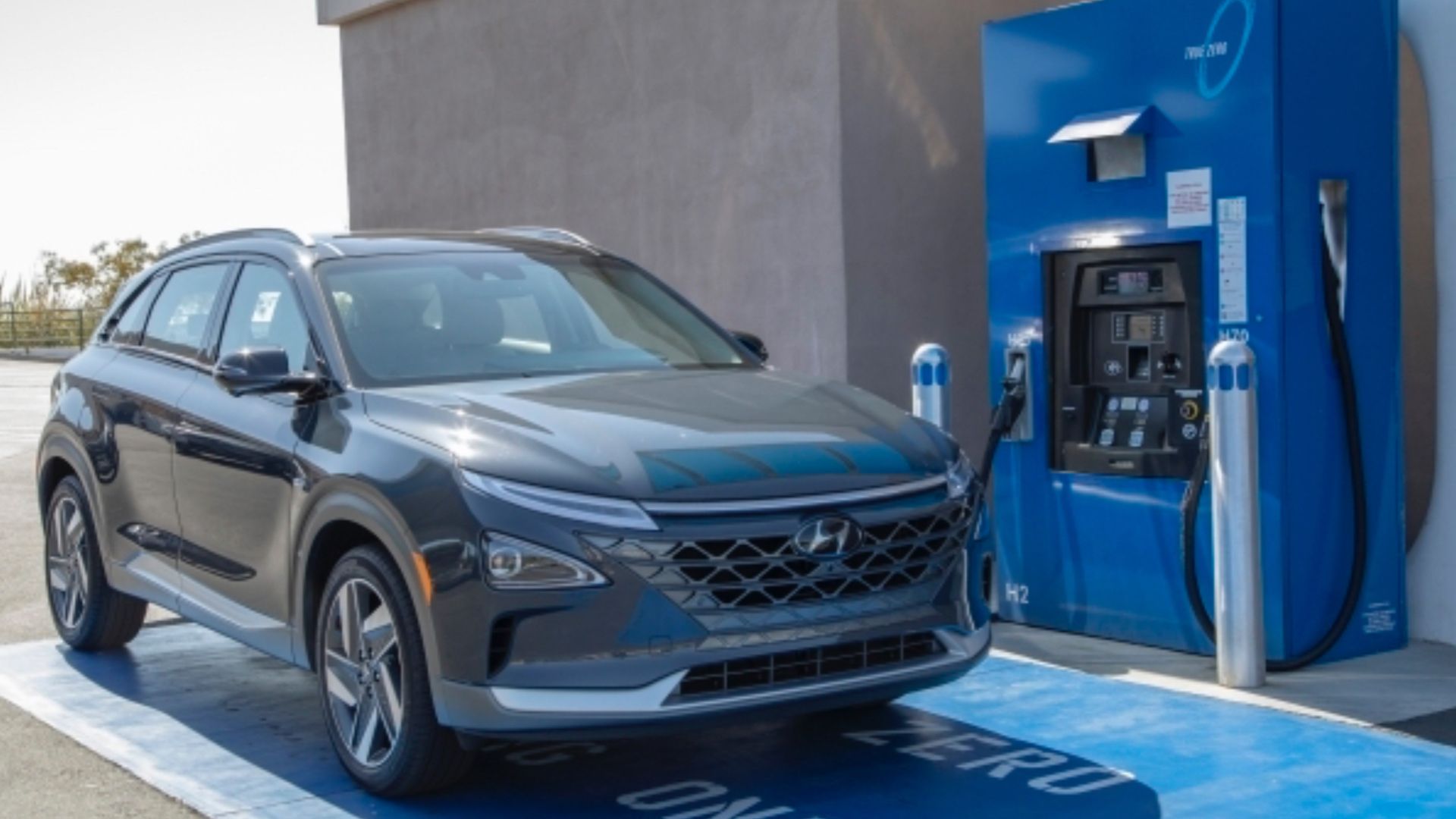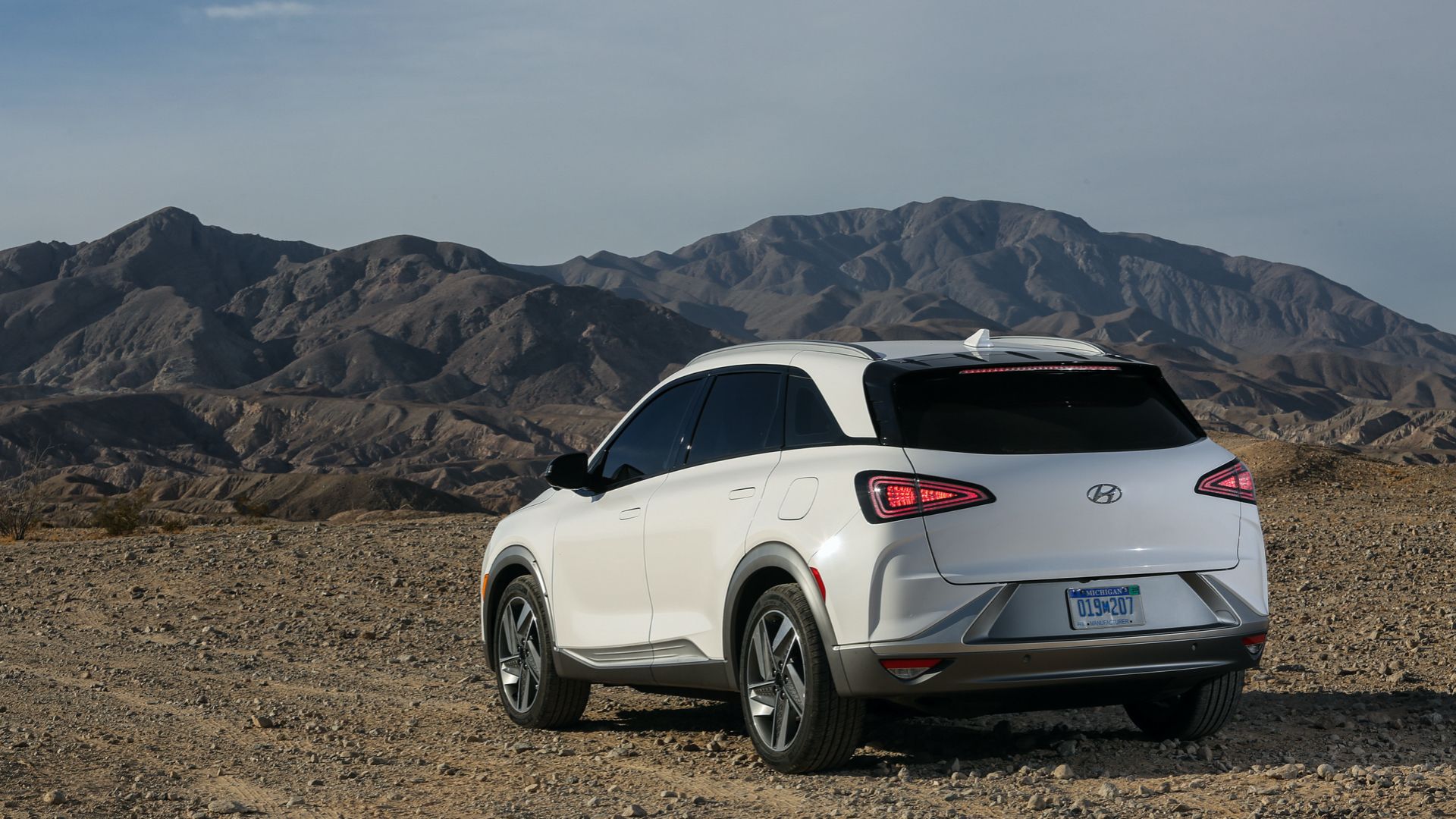With Honda dropping the Clarity, the Hyundai Nexo joins the Toyota Mirai as the only hydrogen-powered vehicles currently on the market. Rather than a traditional electric vehicle that uses batteries to power electric motors, HFCVs use hydrogen fuel cells to generate electricity and drive the motors.
Hyundai is banking on hydrogen-powered vehicles being the next big thing and hopes the added range of the Nexo will entice consumers away from all-electrics. Meant to compete with the Kia EV6, Ford Mustang Mach E, and Hyundai's own EV Ioniq 5, does the Nexo have what it takes to make drivers ditch their plug-in rides?
The 2023 Hyundai Nexo Is The Same As The 2022
The 2023 Hyundai Nexo is largely unchanged from 2022, but the automaker reportedly has some exciting new features for 2024. The current year Nexo is available in a $61,470 base model and a Limited trim for $64,920. The extra $3,000 does offer some decent luxuries and is probably worth it.
The Limited Nexo comes with amenities like a bigger sunroof, a heated steering wheel, ventilated seats, and a blind spot view mirror. It also has a hands-free power rear liftgate, a 360-degree camera, and remote parking. The powerful Krell audio system and bigger wheels are nice additions as well.
The Nexo is a reasonably roomy SUV that seats 5 adults comfortably, and there are 30 cubic feet of cargo space behind the back seats. The interior is well-done with ergonomic and intuitive controls, a digital dash, and a center-mounted infotainment system — it's on par with other Hyundai entries like the Tuscon and Ioniq 5 in terms of comfort and features.
Power, Range, And Handling Of The 2024 Hyundai Nexo
At 4,000 pounds with a 161 horsepower motor, the Nexo is a little underpowered. Hyundai added a 40-kWh battery pack to the 95-kW fuel-cell stack to help give it a little more jump off the line, but the power-to-weight ratio is still a bit underwhelming. On the upside, the Nexo is faster than its only true competitor, the Toyota Mirai.
Where the Nexo really shines is in its 380-mile range with the base Blue trim. The Limited gets less, with 354 miles on a fill-up, but that's still better than most comparable EVs. The Kia EV6 only gets 250 miles on a single charge, and the Hyundai Ioniq 5 falls short at between 220 and 300 miles depending on which trim.
A slight drawback is that the Nexo only comes in front-wheel drive. An all-wheel drive option would have made it more attractive to EV drivers. Despite that, it does offer a comfortable ride with electrically assisted steering, bump-absorbing suspension, and strong regenerative braking.
How Does The Nexo's Hydrogen Fuel Cell Work?
While EVs have battery packs, usually as a skateboard the vehicles sit on, the Nexo has a reinforced hydrogen tank under the hood. The Nexo uses the same type of electric motors as EVs, but how it gets that electricity is radically different.
The hydrogen in the Nexo is sent to a fuel-cell stack, where it passes through a membrane to combine with oxygen. This process excites the hydrogen, producing electricity, which then powers the vehicle's motors. The only byproduct of this reaction is water vapor which exits cleanly through the Nexo's tailpipe.
Driving a HFCV like the Nexo is identical to an EV. There are no added noises or vibrations from converting hydrogen into electricity, and it is a zero-emissions vehicle just like its all-electric cousins. Filling up the Nexo's hydrogen tank only takes 5 minutes versus charging an EV, which can be an overnight affair.
The Greatest Thing About The Nexo Is Its Biggest Drawback
The advanced science of the Nexo's hydrogen power and added range makes for a desirable SUV, but it's also the biggest strike against it. The fact of the matter is there is limited hydrogen refueling infrastructure in the United States. While it's cool to have a next-gen hydrogen ride, it's even cooler to be able to fill it up.
There are only around 60 hydrogen stations in the U.S., all of which are in California, and they are notorious for being inoperable. Even when they are up and running, they can only handle 2 fill-ups before they go offline for 30 minutes to repressurize. Nobody in any other state can buy a Nexo, and Californians have to choose their routes carefully to ensure they can get reliable refueling.
Another disadvantage for hydrogen is the cost. A kilogram of hydrogen runs between $10 and $17 at California hydrogen stations, which is the equivalent of $5 to $8.50 per gallon of gasoline to drive the same distance. Charging an EV overnight has a gasoline equivalent of around $2 a gallon. Hyundai does offer $13,000 worth of fill-ups, but after that, a driver is on his or her own.
Is the Hydrogen-Powered Nexo The Next Big Thing?
It's hard not to get excited about hydrogen fuel cell vehicles because, for lack of a better word, the technology is nifty. Unfortunately, many may feel that the tech isn't quite there to make it an EV killer. There needs to be more infrastructure as well as getting the cost of hydrogen down.
Besides some added range, the Nexo doesn't offer anything more than what can be had in the Ioniq 5 and has more drawbacks. Hyundai is expected to announce big changes for the 2024 Nexo, but unless they unveil a nationwide fueling network and $1 a kilogram of hydrogen, there's not much reason to buy one.

